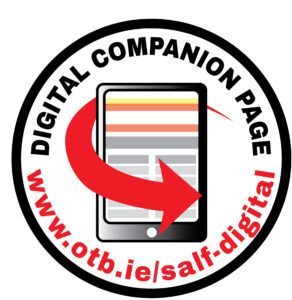Description
PARENTS: Please click the Stockists icon above to search for a local supplier which will avoid or reduce delivery charges.
SALF: Self Assessment Learning Folders
Online Course for Teachers (optional): SALF – Assessment for Learning (AfL) – A Practical Approach.
The SALF Revised Guidelines provide schools and teachers with a structured framework that bridges teacher-led learning and assessment with child-led learning and assessment. These guidelines are based on socio-constructivist principles of learning and provide a framework for teachers that enable children to become more active in their own learning and in the assessment of that learning.
This new SALF Guidelines for Teachers is a fully updated and revised edition of the original widely used first edition published in 2011, which was researched and written by Joan Keating N.T. B.Ed & Siobhán Cahillane-McGovern Ph.D,
What’s new?
The revised guidelines bring together in one chapter, ten strategies/methodologies that best develop children’s competencies for peer and self-assessment. The revised guidelines outline clearly the ten steps in creating, compiling and completing Self Assessment and Learning Folders. These ten steps are now streamlined and the same for all classes from Junior Infants to Sixth classes. A specific chapter aimed at supporting teachers in further developing SALF with Middle and Senior classes is now included. A dedicated chapter on helping schools develop SALF as a whole school initiative based on the experiences of the current authors in their schools and their experience working with principals and teachers engaged in ongoing professional development of assessment in practice. It includes a sample implementation time-frame, together with strategies for supporting the involvement of parents/guardians/carers and others in the process.
Other new Features:
- Revised templates at the end of each chapter
- Current authentic work samples from the classroom
- Vibrant photos of SALF in action in the classroom
- How to incorporate digital learning in the SALF process
SALF: Self Assessment Learning Folders
As part of using SALF, children will need a folder to collate and store their selected work. A Junior Folder/Fillteán do Ranganna Sóisearacha is recommended for children in Junior Infants to 1st Classes. This scrapbook-like folder is where the children store the work that they have selected as best evidence of their learning. They can do this by direct entry (e.g. drawing or writing) or by cut ‘n’ paste – the choice is theirs. A key part of SALF is that when they select each piece of work, they justify their selection at the bottom of each page – I chose this because……
The Outside the Box Junior Folder/Fillteán do Ranganna Sóisearacha differs to a scrapbook in that it has a SALF Organsier/M’eagraí and subtle prompts on the top of each page to guide the child. Inside pages are also white (with prompts) making it easier for the child to do direct entries (e.g. drawing or writing). The OTB Junior Folder/Fillteán do Ranganna Sóisearacha has also been purposely designed to be robust as firstly it gets a lot of use throughout the year and secondly it is brought home regularly for parents/guardians to see/comment and its oversized format may not fit fully in their schoolbag for protection.
2nd to 6th Class Folders:
It is recommended within SALF that older children (2nd to 6th classes) begin to use a Poly-pocket Folder/Fillteán. This type of folder/fillteán will allow the children to select and equally important, deselect (replace), what they believe is best evidence of their learning. Again, justifying their selection at the bottom of each page is key – I chose this because…… or I deselected this earlier piece of work and replaced it with this because…..
A working example of the ‘replacing’ mentioned above is when a child using SALF, removed a maths test page (which had 10 out of 10 questions correct) from the maths section of his folder and replaced it with a different maths test page result where he had achieved only 8 out of 10 questions correct. The justification he wrote at the bottom of the page was: “Today – I finally got fractions.” In his opinion getting 8 out of 10 questions correct on fractions was ‘better’ than 10 out of 10 in a previous multiplication test. It was, in his opinion, better evidence of his learning and his progress in maths. This is a rich, real-life example of Assessment for Learning (AfL) at work.
A 20-Pocket folder/Fillteán le 20 Póca is recommended for children in 2nd, 3rd and 4th classes and a 40-Pocket folder/Fillteán le 40 Póca is recommended for children in 5th and 6th classes and beyond. Any poly-pocket folder may be used and these are readily available in stationery shops and educational bookshops nationwide.
The generic poly-pocket folders sold by Outside the Box are the preferred choice of folder for use with SALF. They are robust and have a pocket at the front for the pupil to personalise their own folder. With these poly-pocket folders you will receive a SALF Tabs’ Card (with instructions) and a SALF Folder Organiser Card for each folder provided. Please note that these inserts are complimentary with each folder ordered but separate (i.e. not assembled).
Useful Links: